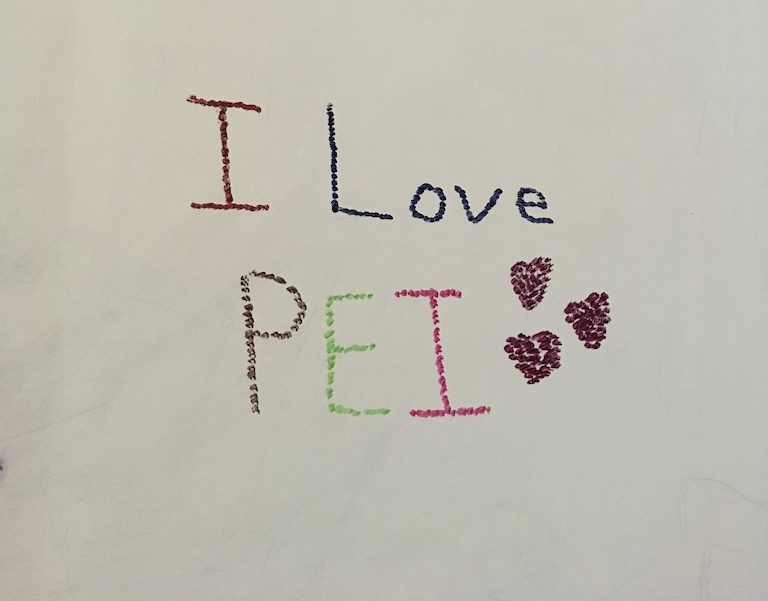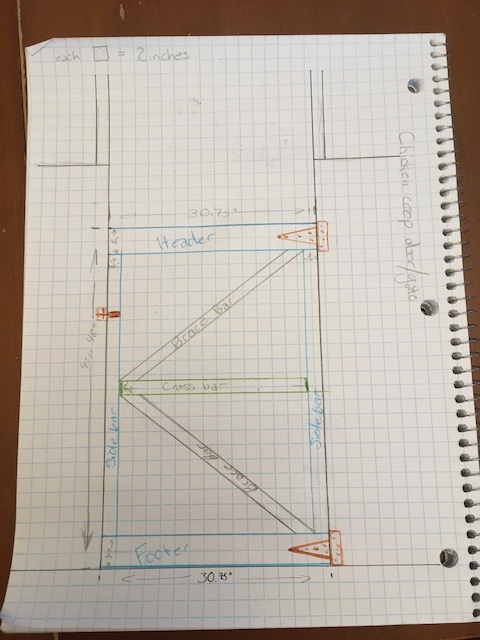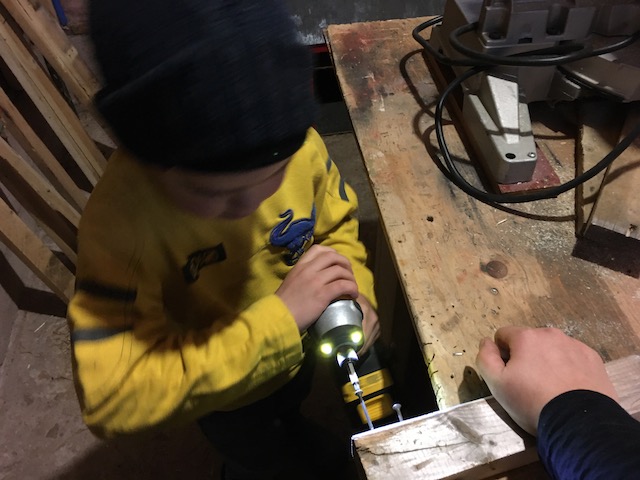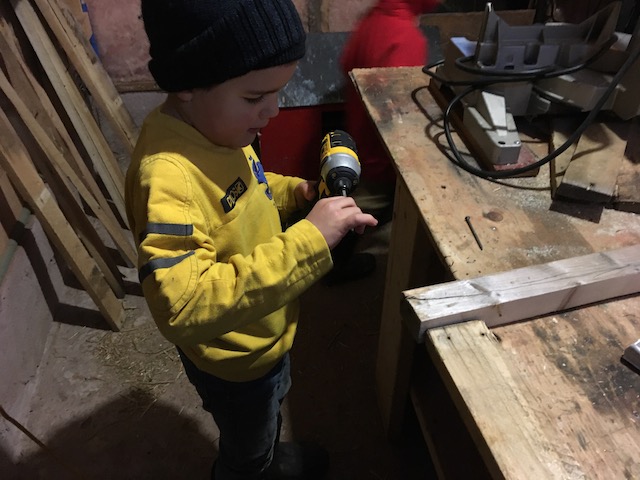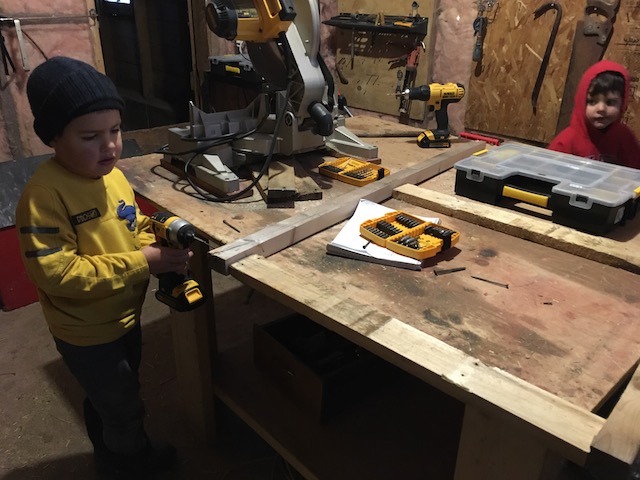Soon after arriving home from our trip to Ontario in October, we picked up our hens from friends who had kindly looked after them for us along with their own. Christopher had so been looking forward to reuniting with his hens, and expressed much joy and delight to have them again!
We took the opportunity to grow our flock of three Bard Plymouth Rocks — named Flower, Tulip, & Violet:

to include two Ameraucanas. Meet Daisy (white) and Iris (black), each hatched in the spring of 2019.
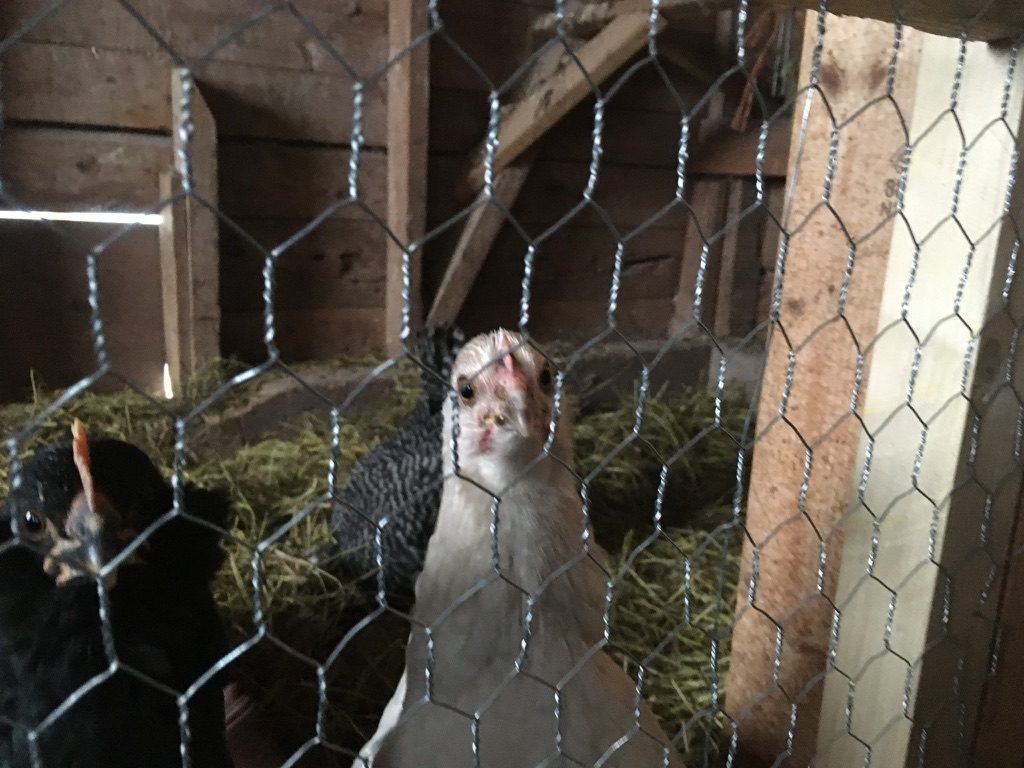
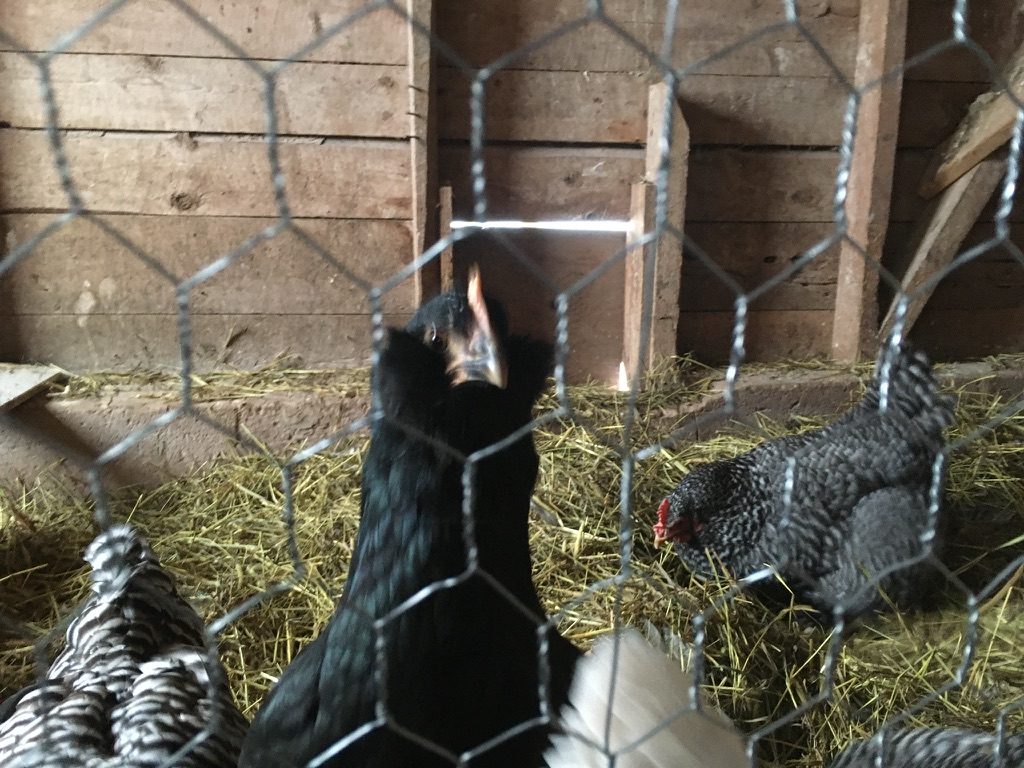
Iris will probably lay light blue or green eggs, and Daisy the usual brown. Christopher has wanted a hen that lays blue eggs ever since receiving one in our our very first dozen eggs purchased on the island.
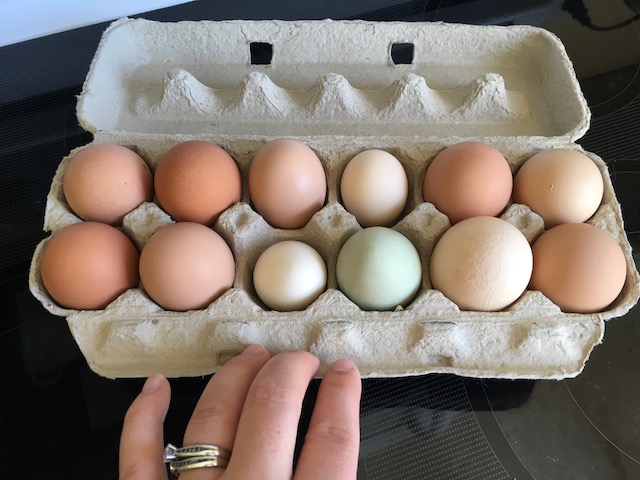
Our first blue egg back in June
In addition to Iris and Daisy, we adopted two older hens. Christopher named the Rhode Island Red hen Poppy, and the black hen of unknown breed Lily. Unfortunately, we never got a photo of these two.
With the winter fast approaching we decided it was a good time to move our hens from their outdoor run into the shed to shelter from the elements. The shed had already been used for this in the past, having a small door by which the hens could wander outdoors, weather permitting.
But with the tools and other supplies in the shed, we needed an inside door to isolate the hens! At first, we used a large cardboard box to keep the doorway blocked off. It worked — sort of — but we often found the hens outside their assigned area. It had to be easy for Christopher to use as he kept up the chores of feeding and watering our feathered ladies.
So, Christopher and Mommy took to getting a plan in place and a door made. It became a sort of handcraft for the term, with his learning how to draw a blueprint with proper measurements, and then follow the blueprint in building the door.
We had previously received a pallet of pellets, and decided to reuse the wood for this project. A trip to Home Depot and some chicken wire and hardware was everything we needed to get going!
Christopher worked to disassembled one side of the pallet. With only a little help required, he used a crowbar and hammer to loosen and lift the boards, and then removed the nails. Anne got involved with the project and helped as well.
After long hours over several days, Christopher was ready to move on to cutting two side braces for the sides of the door. Mamma used the circular and chop saws to help here. Measuring twice, cutting once, and finally assembling, Christopher put it all together! I could see his timidity with using the power tools fade as he gained experience.
Out for a dry fit!
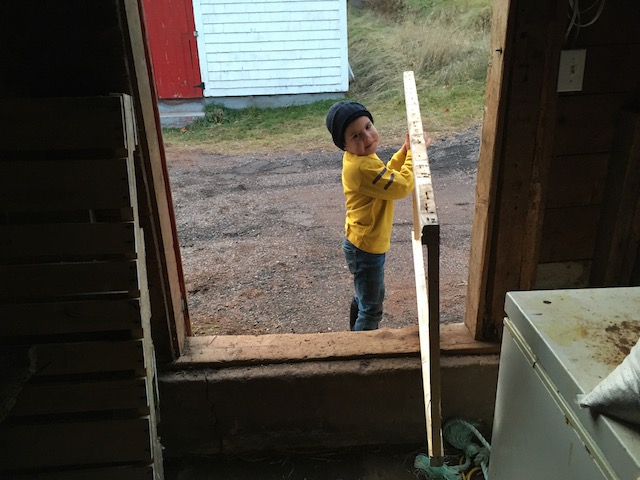
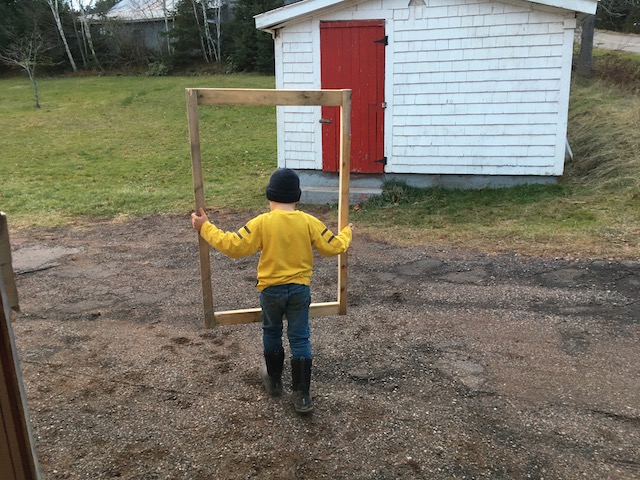
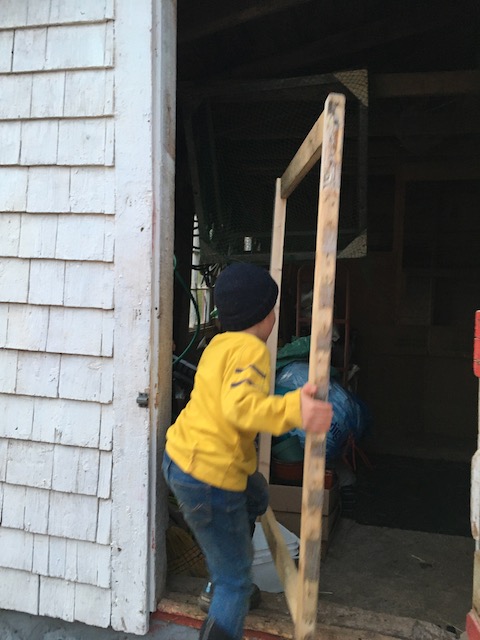
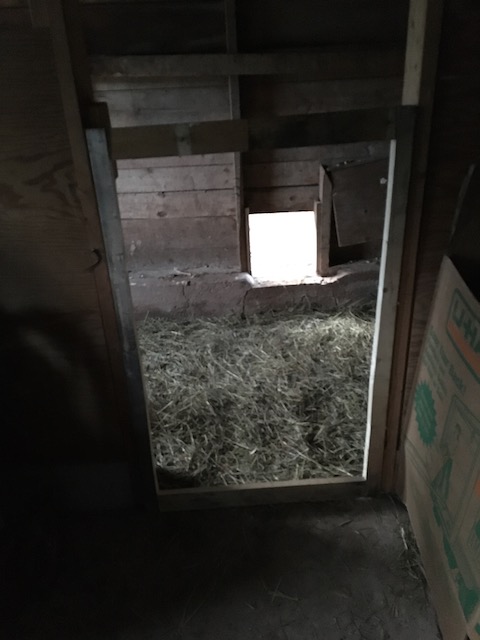
Dry fit
Back to the workshop to add the cross bar, chickenwire, and hardware:
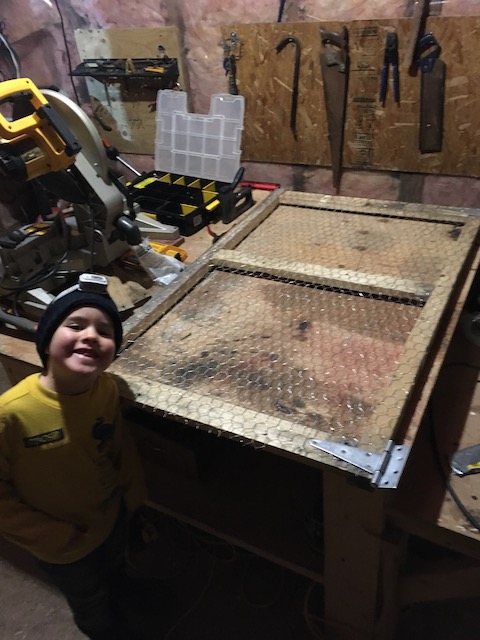
She’s done! 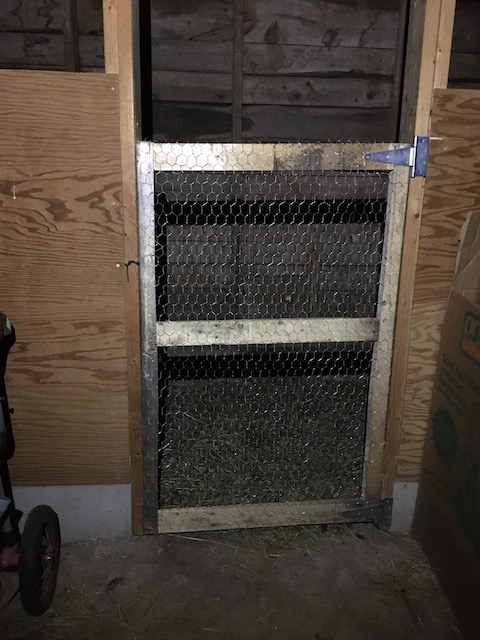
She fits! 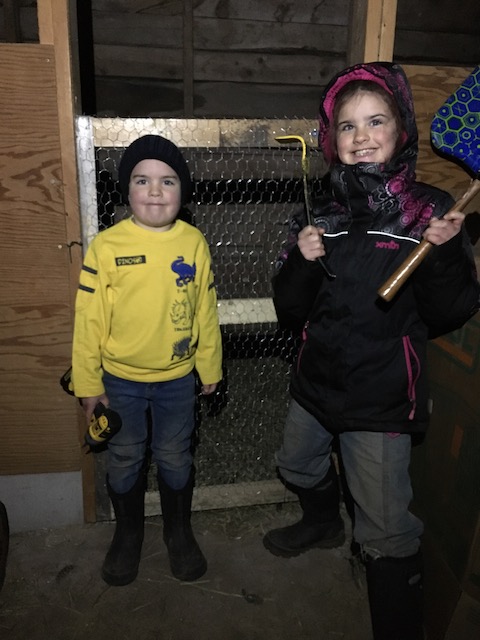
Anne’s tools of mass destruction
It’s not a perfect match to our blueprint, as we decided to eliminate the brace bars given the strength of the pallet boards… or maybe becaue Christopher was “so tired” of the project.
We’re so proud of Christopher’s determination and willingness to work hard to make a safe place for his hens. He’s looking forward to future opportunities to use the power tools in building things for his hens!
Now, back to the hens themselves.
The pecking order was established quite quickly: Violet ruled the roost, and then came Tulip, Flower, Poppy, Lily, Iris and Daisy. But we began to observe that our youngest hens — Iris and Daisy — were quite literally been hen pecked by everyone else. Lily and Poppy, though, were particularly brutal, as they seemed to be mean spirited about the whole thing.
We made sure they had enough space while feeding to avoid crowding, but still Poppy and Lily would attack Iris and Daisy. We even tried holding them in different places during feeding to keep them apart, but the pecking continued well afterwards.
Maybe it just needed more than a week for everyone to settle in, so we decided to try holding out. But one Saturday morning Anne came running into the house frantic and saying, “Iris is bleeding!! She has blood down her beak and on her comb!” Mamma and Christopher ran out quickly.
Sure enough: Iris’s comb was bleeding, courtesy of Lily and Poppy. Christopher was so upset.
We took Iris inside and wrapped her in a towel to help keep her calm and immobile. We used a cold compress to stop the bleeding — doing this multiple times that day — all the while googling to figure out what in the world we were supposed to be doing.
We learned that the best thing to do was to separate the “bad hens”, as Alfred and Christopher had started to call them. While waiting for Iris’s comb to heal before bringing them back, we identified Lily as the primary aggressor. Even with twice the space and just one other hen, Lily had plucked the feathers off of Poppy’s neck and would chase her away from their feed and water.
We decided to return the two adopted hens to their owners. There really wasn’t much sadness saying goodbye to those hens, even though we knew they’d end up as broth soon after!
Since reducing our flock back to five, Iris’s comb has healed completely, and we haven’t had an issue with our Plymouths and Ameraucanas. Christopher is looking forward to the spring and the longer daylight hours and the first of hopefully many more eggs this year.
Moral of the story? We’re likely to avoid older hens as we continue to grow our flock.
